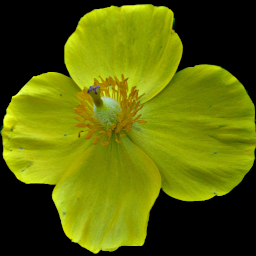A European immigrant that has established itself all over eastern North America. It likes cultivated or recently disturbed ground; this plant was growing in a lot in Beechview that had recently been filled in, where it was blooming in late June. It also goes by the name of Evening Lychnis, because its flowers are nocturnal, closing during the day unless the weather is dreary, as it was on the rainy day when this picture was taken.
The taxonomy of this species is in a dreadful state. It seems that most current botanists accept the name we give above (Silene latifolia subspecies alba), but in published works we find it listed under a wide variety of names, some of them confusingly similar to the names of confusingly similar species. Older botanists place this species in the genus Lychnis, which differs from Silene in very small structural details of the flowers—so small, apparently, that botanists have now decided to disband the genus, absorbing its members into Silene. Thus in Gray this species is Lychnis alba; but Gray also records Silene latifolia as a synonym for S. vulgaris, the Bladder Campion. Other botanists record this species as Silene alba.
We give Gray’s descriptions of both Lychnis and Silene, since his description of the one depends on the other:
SILÈNE L. CATCHFLY. CAMPION. Calyx 5-toothed, 10-many-nerved, naked at the base. Stamens 10. Styles 3, rarely 4. Pod 1-celled, sometimes 3-celled at least at the base, opening by 3 or 6 teeth at the apex. — Flowers solitary or in cymes. Petals mostly crowned with a scale at the base of the blade. (Name from sialon, saliva, from the viscid exudation on the stems and calyx of many species. The English name Catchfly alludes to the same peculiarity.)
LÝCHNIS [Tourn.] L. CAMPION. Styles 5, rarely 4, and pod opening by as many or twice as many teeth; otherwise nearly as in Silène. (Ancient Greek name for a scarlet or flame-colored species, from lychnos, a light or lamp.)
Calyx-teeth not twisted; petals showy, much exserted; plant green.
Flowers dioecious or polygamous.
L. alba Mill. (WHITE CAMPION.) Leaves ovate to lance-oblong; flowers white or pink, fragrant, opening in the evening; calyx-teeth longer [than in L. dioeca], attenuate; capsule ovoid conical, narrow-mouthed at dehiscence. (L. vespertina Sibth.) — Waste grounds and roadsides, but less common [than L. dioeca]. (Adv. from Old World. ) — Resembles Silene noctiflora but has 5 styles.
–
In his Field Book of American Wild Flowers, F. Schuyler Mathews gives us this description:
A charming plant naturalized from the old country, with densely fine-hairy, ovate-lance-shaped leaves and stem, both dark green; the leaves opposite. The sweet-scented flowers are white, closely resembling those of Silene noctiftora; in Lychnis, however, the flower has five styles, in Silene, three. Both species open their blossoms toward evening and close them during the following morning. The white petals are deeply cleft and crowned at the base with miniature petajlike divisions. The calyx is inflated, and often stained maroon-crimson along the ribs, which are sticky-hairy; after becoming still more inflated it withers and leaves exposed the vase-shaped light brown seed-vessel, pinked at the small opening above. 1-2 feet high. In waste places and borders of fields, from Me. to N. J. and N. Y. Probably farther west. Found at Phillip’s Beach, Marblehead, Mass.







